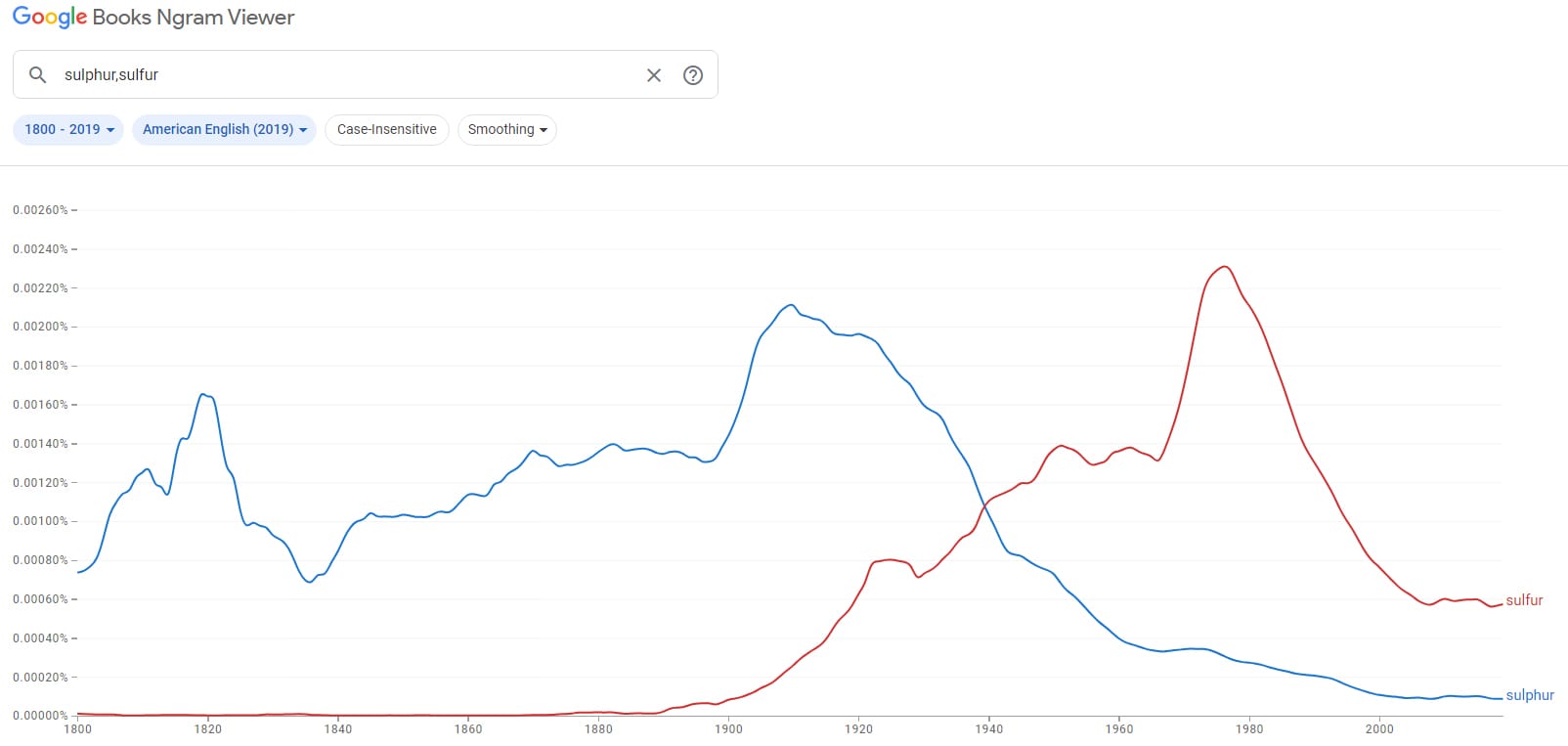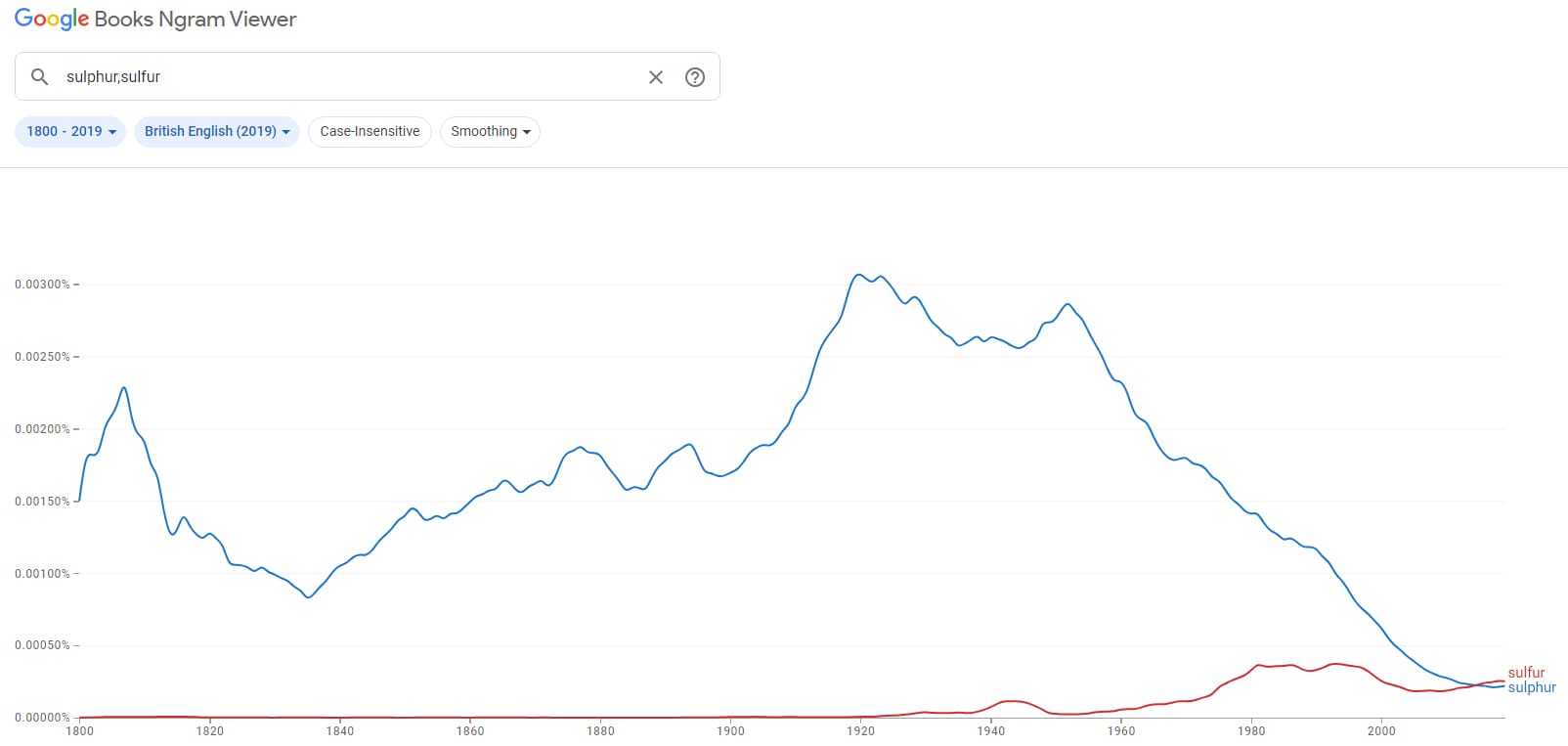sulfur

Sulfur is a chemical element with atomic number 16 and the symbol S. It is a yellow, crystalline solid at room temperature. By mass, it is the tenth most abundant element in the universe and the fifth most abundant on earth. It has been known since antiquity but only recognized as an element with advent of modern chemistry in the late eighteenth century. It has a wide variety of commercial applications, including in making matches, gunpowder fertilizer, fungicides and pesticides, pharmaceuticals, and as a precursor for other chemicals.
The word is borrowed into English from French, specifically the Anglo-Norman sulfre, which in turn comes from the Latin sulfur. It is recorded in Anglo-Norman texts from the early twelfth century.
Sulfur makes its English-language appearance by the end of the fourteenth century. Here is a passage from John Gower’s Confessio Amantis, written prior to 1393, in which Medea is casting a spell upon Jason’s father Aeson:
Tho lay ther certein wode cleft,
Of which the pieces nou and eft
Sche made hem in the pettes wete,
And put hem in the fyri hete,
And tok the brond with al the blase,
And thries sche began to rase
Aboute Eson, ther as he slepte;
And eft with water, which sche kepte,
Sche made a cercle aboute him thries,
And eft with fyr of sulphre twyes.
(Then lay there certain hewn wood,
Of which the pieces now and again
She placed them in the wet pits,
And put them in the hot fire.
And took the brand with all its blaze,
And thrice she began to run
Around Aeson, there as he slept;
And also with water, which she had kept,
She made a circle about him thrice,
And also with fire of sulfur twice.)

The spellings sulfur and sulphur have coexisted since the word appeared in Middle English, with sulphur being the more common spelling for most of the word’s history. The distinction is often thought to be a difference in American and British spelling, but that geographic distinction is quite recent. Sulfur only became the dominant U.S. spelling c. 1940. In 1990, the International Union of Pure and Applied Chemistry (IUPAC) adopted the sulfur spelling as the official one, and British research publications quickly began to adopt that spelling as well. The sulfur spelling eclipsed the sulphur one in British English c. 2015.

Sources:
Anglo-Norman Dictionary, 2021, s.v. sulfre, n.
Gower, John. Confessio Amantis. In Confessio Amantis, Volume 3, Russell A. Peck ed. and Andrew Galloway, trans. lines 5:4085–94. TEAMS Middle English Texts.
Middle English Dictionary, 2019, s.v. sulphur, n.
Miśkowiec, Pawel. “Name Game: The Naming History of the Chemical Elements—Part 1—From Antiquity till the End of 18th Century.” Foundations of Chemistry. 1 November 2022. DOI: 10.1007/s10698-022-09448-5.
Oxford English Dictionary, second edition, 1989, s.v. sulfur | sulphur, n.
Image credits: NGC 7000, David Wilton, 2024, licensable under a Creative Commons Attribution-NonCommercial-ShareAlike 4.0 International License; Google Books Ngram Viewer, 28 July 2024, American spelling, British spelling.